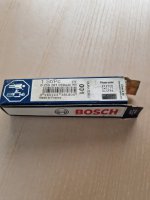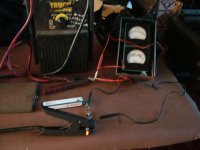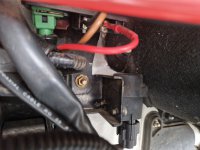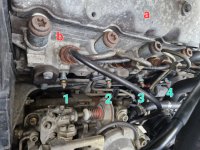Hi, good morning,
I have a Camping Car, Fiat Ducato 1.9 TD from 1999, and since a few weeks it gets more difficult to start the engine in the morning or after a few hours stopped. Initially it took 2 or 3 key turns to properly start (and each turn of a few seconds of cranking), but now it can almost only start with starter spray.
At the beggining of the issue i've visited a mechanic in Hungary that replaced the 4 spark bulbs, installed a pressure valve in the fuel line close to the fuel pump, and also cleaned the 4 fuel injectors. He also did some general maintenance replacing the air filter and the engine oil. The issue remained the same and he just said to me that he had no other idea about the issue.
When the engine is trying to start the smoke in the exhaust is white/grey and smells diesel, after it starts there is no more white/grey smoke, and driving there is only black smoke when accelarating full throtle or climbing, otherwise no smoke at all.
I'm currently in a trip and need to get this issue solved as i'm afraid during the winter it will get worse or even damaging the engine or other components with this starter spray used almost daily.
One day i was trying to start without the spray and one neighbor with a Motorhome approached and said to me "you have an issue with the fuel pressure, it happened to me in my old RV with same engine and it was lack of pressure in the fuel line cause the pump gets old and cannot suck the fuel. You need to install a 12v ad-hoc pump to get this solved.". I thanked him for the tip and start searching for it, but i'm not really sure this is the issue. I'm not an expert in mechanics, but unless i'm wrong, if it was lack of fuel pressure how come it would start with spray and then continuously running without any other issue?
Does anyone had a clue of what this can be and how can i have this solved?
Thanks a lot! Any help appreciated.
I have a Camping Car, Fiat Ducato 1.9 TD from 1999, and since a few weeks it gets more difficult to start the engine in the morning or after a few hours stopped. Initially it took 2 or 3 key turns to properly start (and each turn of a few seconds of cranking), but now it can almost only start with starter spray.
At the beggining of the issue i've visited a mechanic in Hungary that replaced the 4 spark bulbs, installed a pressure valve in the fuel line close to the fuel pump, and also cleaned the 4 fuel injectors. He also did some general maintenance replacing the air filter and the engine oil. The issue remained the same and he just said to me that he had no other idea about the issue.
When the engine is trying to start the smoke in the exhaust is white/grey and smells diesel, after it starts there is no more white/grey smoke, and driving there is only black smoke when accelarating full throtle or climbing, otherwise no smoke at all.
I'm currently in a trip and need to get this issue solved as i'm afraid during the winter it will get worse or even damaging the engine or other components with this starter spray used almost daily.
One day i was trying to start without the spray and one neighbor with a Motorhome approached and said to me "you have an issue with the fuel pressure, it happened to me in my old RV with same engine and it was lack of pressure in the fuel line cause the pump gets old and cannot suck the fuel. You need to install a 12v ad-hoc pump to get this solved.". I thanked him for the tip and start searching for it, but i'm not really sure this is the issue. I'm not an expert in mechanics, but unless i'm wrong, if it was lack of fuel pressure how come it would start with spray and then continuously running without any other issue?
Does anyone had a clue of what this can be and how can i have this solved?
Thanks a lot! Any help appreciated.










